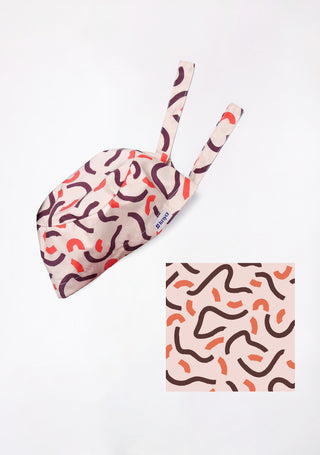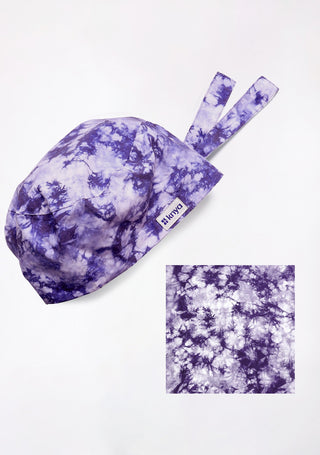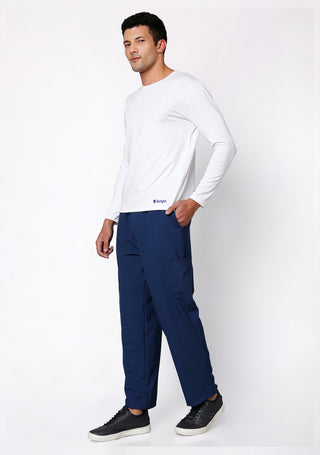Proper storage and organization of medical apparel not only prolongs its lifespan but also helps maintain hygiene and efficiency in your daily routine. By implementing the right storage techniques, washing methods, and organization strategies, you can ensure that your scrubs, lab coats, and accessories remain fresh and durable.Taking a few extra minutes to store your apparel correctly today can save you time, money, and effort in the long run. Whether you’re a doctor, nurse, or medical technician, keeping your work attire in pristine condition reflects professionalism and ensures comfort throughout your shifts.
Choosing the Right Storage Space
Your storage area plays a crucial role in maintaining the quality of your medical apparel. The right environment ensures that your scrubs and lab coats remain fresh, clean, and free from contaminants.
Key Considerations for Storage Space:
- Clean and Dry: Store your apparel in a dry, well-ventilated area to prevent mold and mildew growth.
- Away from Direct Sunlight: Excessive exposure to sunlight can cause fabric colors to fade over time.
- Separate from Everyday Clothes: Medical apparel should be stored separately from casual wear to prevent cross-contamination.
- Accessible Location: Keep your medical attire in an easy-to-reach location to streamline your daily routine.
If space allows, consider using a dedicated closet or a section of your wardrobe specifically for medical apparel. A storage unit with shelves and compartments can also help in better organization.
Browse best Scrubs Collection
Washing and Preparing Before Storage
Before storing medical apparel, it’s essential to wash and dry them properly. This ensures that bacteria, viruses, and stains are removed, preventing long-term fabric damage.
Best Washing Practices:
- Sort by Color & Fabric Type: Wash light and dark-colored scrubs separately to prevent color bleeding. Separate cotton from synthetic materials to maintain their texture.
- Use Mild Detergents: Harsh chemicals can weaken fabric fibers, leading to quicker wear and tear.
- Avoid Fabric Softeners: They can create a residue on fabric, reducing the moisture-wicking ability of scrubs and lab coats.
- Sanitize When Needed: For extra sanitation, add a small amount of white vinegar or an oxygen-based bleach to disinfect without damaging the fabric.
- Use Cold or Warm Water: Hot water can shrink or weaken fabric, so opt for cold or warm water for washing.
Drying Tips:
- Air Dry Whenever Possible: Sun drying helps eliminate bacteria, but avoids excessive exposure to prevent fading.
- Use Low Heat on Dryers: High heat can damage elasticity and shrink fabrics.
- Iron with Care: If necessary, use a low-heat setting to remove wrinkles without weakening fabric fibers.
Shop the Best Lab Coats from Here!
Organizing Medical Apparel for Daily Use
To maintain efficiency, organizing your medical attire systematically can save you time while ensuring longevity.
Organization Methods:
-
Hanging vs. Folding:
- Hanging: Use sturdy hangers for lab coats to prevent wrinkles.
- Folding: Scrubs can be neatly folded and stacked in drawers to save space.
-
Categorize by Type:
- Separate tops, bottoms, jackets, and coats.
- Use labeled bins or dividers for gloves, masks, and caps.
-
Use Storage Bags or Covers:
- For rarely used items, store them in breathable garment bags to protect from dust and bacteria.
- Avoid plastic covers as they can trap moisture and encourage mildew growth.
-
Drawer Dividers for Small Items:
- Use organizers for socks, undershirts, or compression socks to keep them accessible and tidy.
Protecting Medical Apparel from Contaminants
Medical apparel is constantly exposed to contaminants. Proper handling and storage can help reduce the risk of spreading germs.
Tips for Keeping Apparel Germ-Free:
- Have a Designated Dirty Laundry Bin: Keep a separate hamper for used scrubs and lab coats.
- Store Clean and Dirty Clothes Separately: Never mix worn scrubs with fresh ones to prevent contamination.
- Use Antibacterial Storage Solutions: Consider using antimicrobial laundry bags or liners to keep apparel bacteria-free.
For those who work in high-risk environments, consider UV-light sanitizers for added protection.
Rotating and Replacing Medical Apparel
To extend the life of your medical attire, rotate your collection regularly. Wearing the same scrubs repeatedly without rotation can lead to faster wear and tear.
How to Rotate Scrubs Effectively:
- Follow a Weekly Rotation System: Assign different scrubs for different days to distribute wear evenly.
- Keep an Inventory: Regularly check for signs of wear and tear and replace old items as needed.
- Invest in Quality Over Quantity: Higher-quality scrubs and lab coats tend to last longer, making them a better long-term investment.
Storing Seasonal Medical Apparel
If you have seasonal attire, such as insulated jackets for colder months, proper storage is key to maintaining their longevity.
Best Practices for Seasonal Storage:
- Vacuum-Sealed Bags for Space Saving: Protects clothing from dust and moisture.
- Cedar Blocks or Sachets: Prevents musty odors and repels insects.
- Label Storage Boxes: Makes it easy to locate items when needed.
Maintaining Accessories and Footwear
In addition to clothing, medical professionals often wear accessories such as compression socks, masks, and protective eyewear.
How to Store Accessories:
- Use Clear Plastic Containers: Easy visibility and access to masks, caps, and gloves.
- Hang Compression Socks: Prevents them from stretching out.
- Store Shoes Separately: Keep work shoes in a ventilated space and away from clothing.
Proper shoe storage helps prevent the spread of contaminants from the workplace into your home.
Travel and Portable Storage Solutions
For medical professionals who travel between hospitals or clinics, keeping a mobile storage system is essential.
Portable Storage Options:
- Rolling Suitcases or Backpacks: Ideal for carrying extra scrubs and shoes.
- Foldable Garment Bags: Keeps lab coats wrinkle-free.
- Zipper Pouches: Organizes small essentials like gloves, ID badges, and pens.
Having a dedicated travel bag ensures you always have fresh apparel on hand.
The Role of Fabric Choices in Longevity
The type of fabric used in medical apparel affects its durability. Choosing the right material ensures that your clothing lasts longer.
Best Fabric Choices:
- Polyester-Cotton Blends: Durable, breathable, and wrinkle-resistant.
- Spandex-Infused Scrubs: Offers flexibility and retains shape over time.
- Moisture-Wicking Fabrics: Prevents excessive sweating and bacteria buildup.
Investing in high-quality fabrics can reduce the frequency of replacements.
Establishing a Routine for Medical Apparel Maintenance
Consistency is key to ensuring that your medical apparel remains in excellent condition.
Suggested Maintenance Routine:
- Daily: Separate used and clean apparel.
- Weekly: Wash and inspect for stains or damage.
- Monthly: Rotate scrubs and check for worn-out items.
- Quarterly: Deep clean storage spaces to prevent dust accumulation.
By following a structured maintenance schedule, you can keep your medical apparel in top shape for years.












